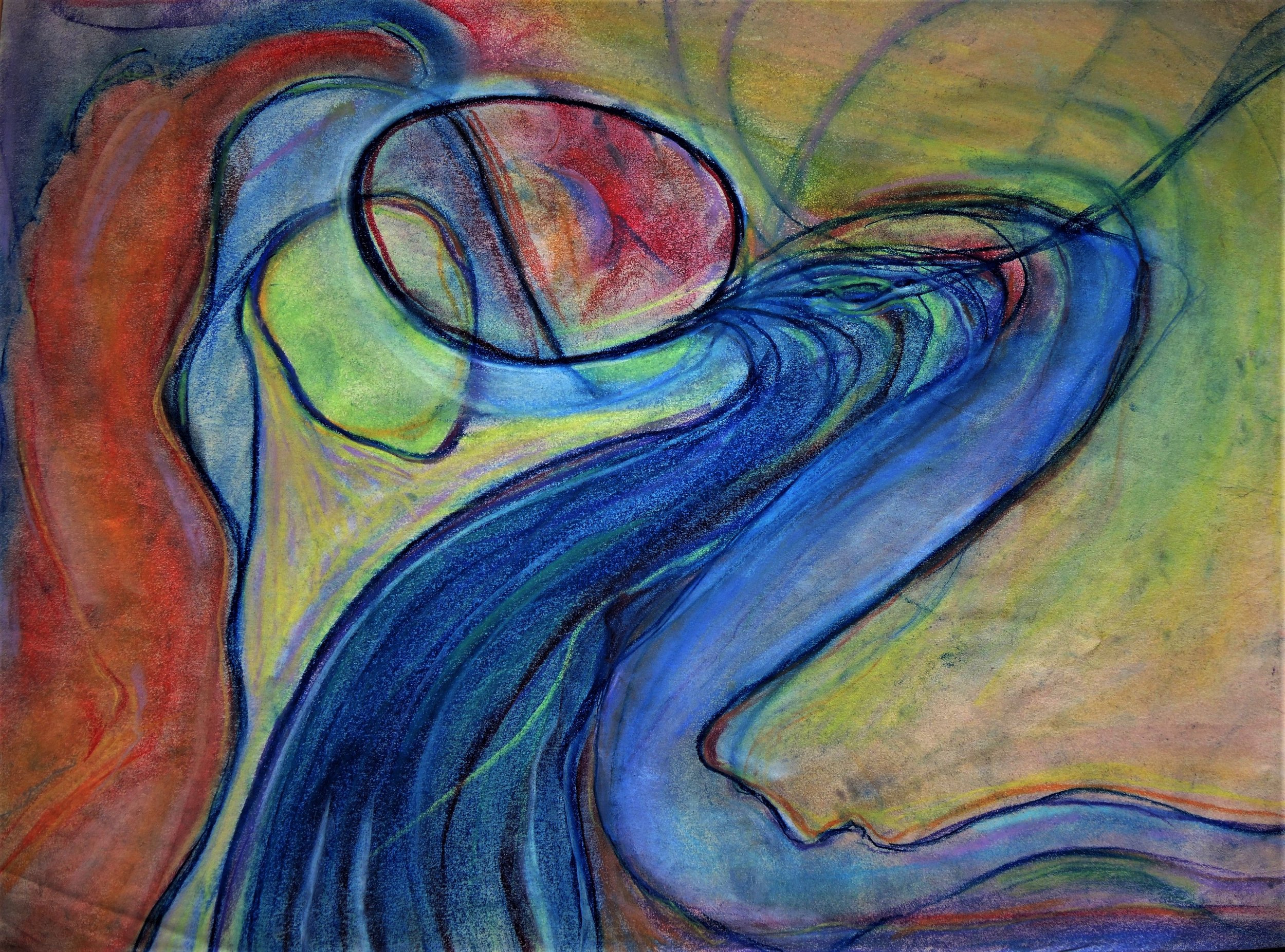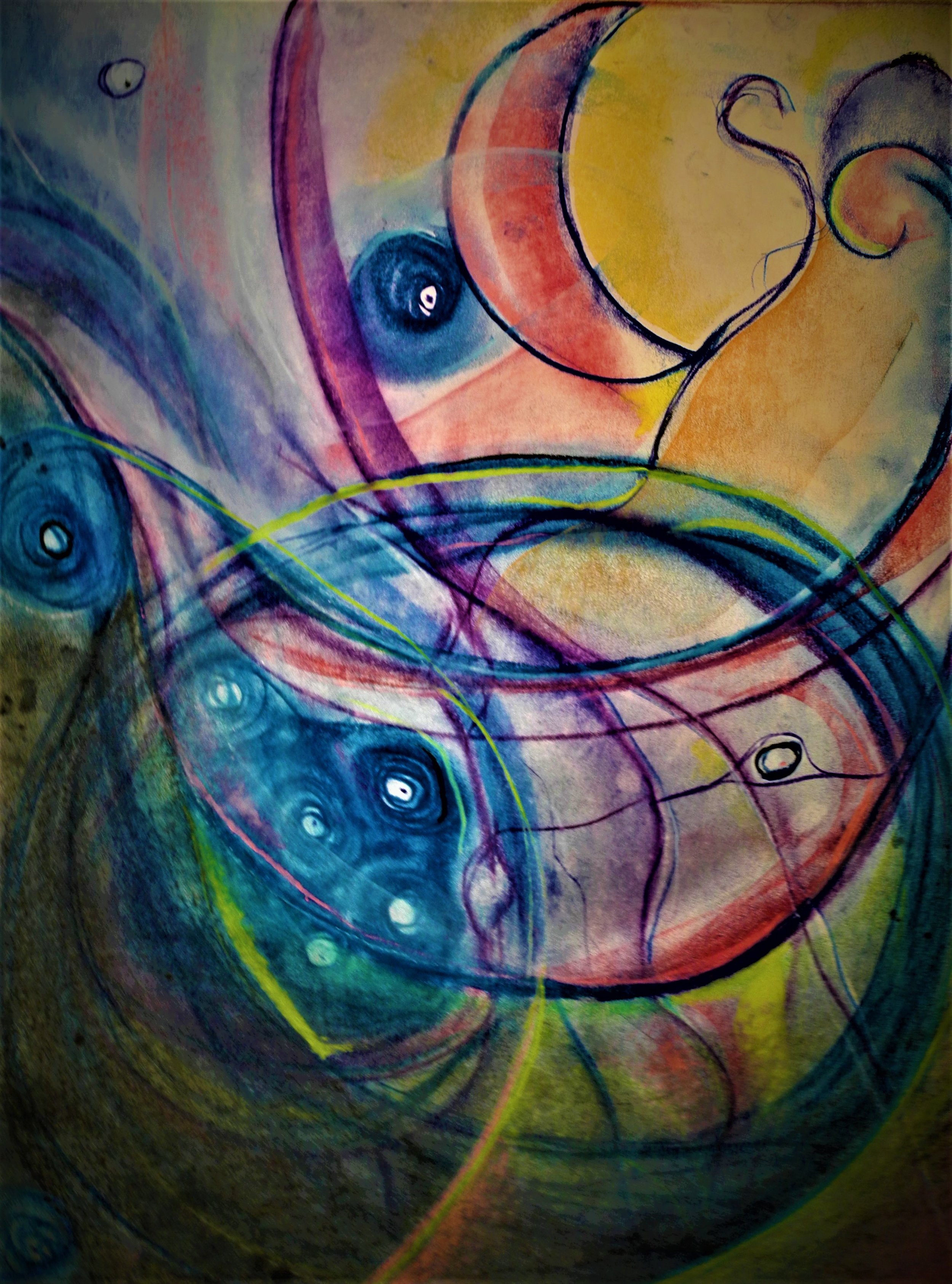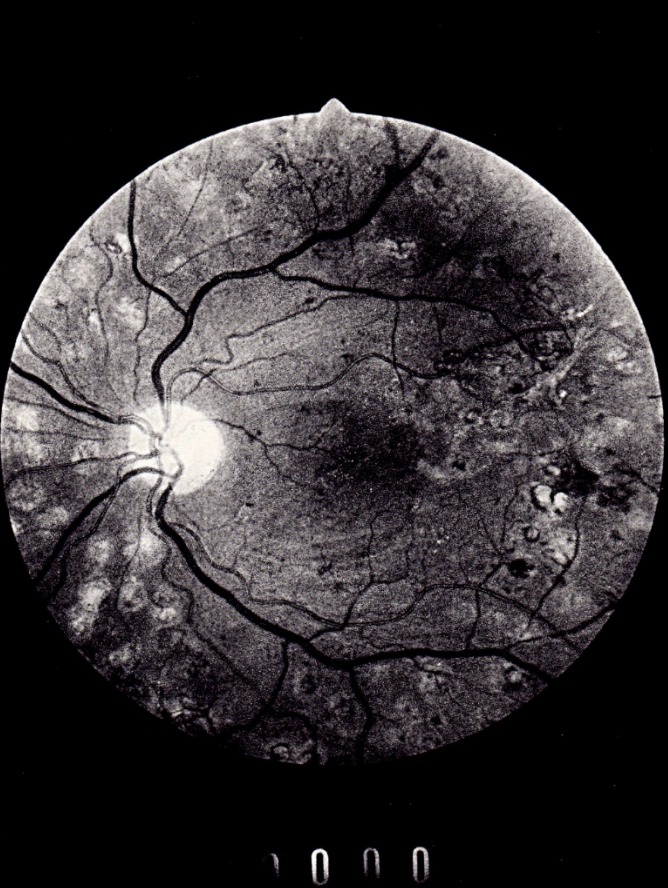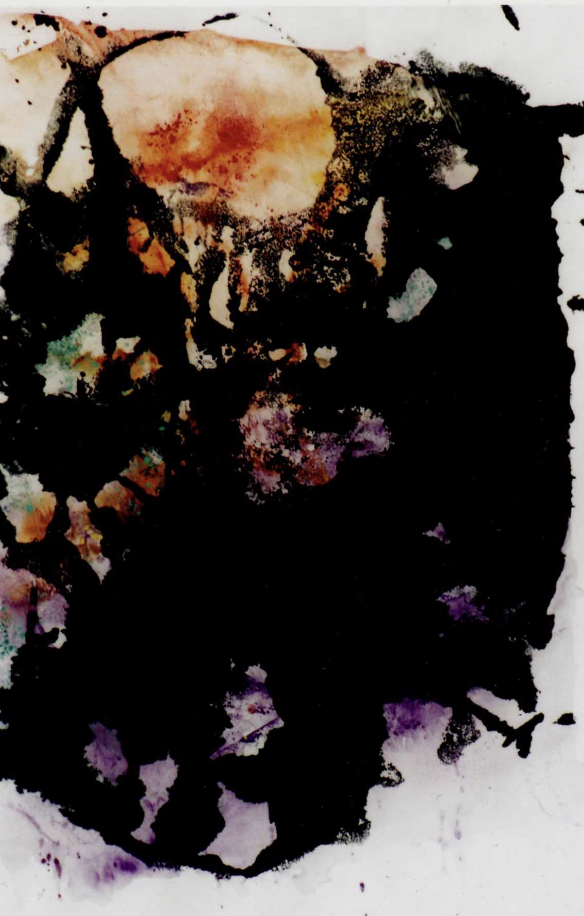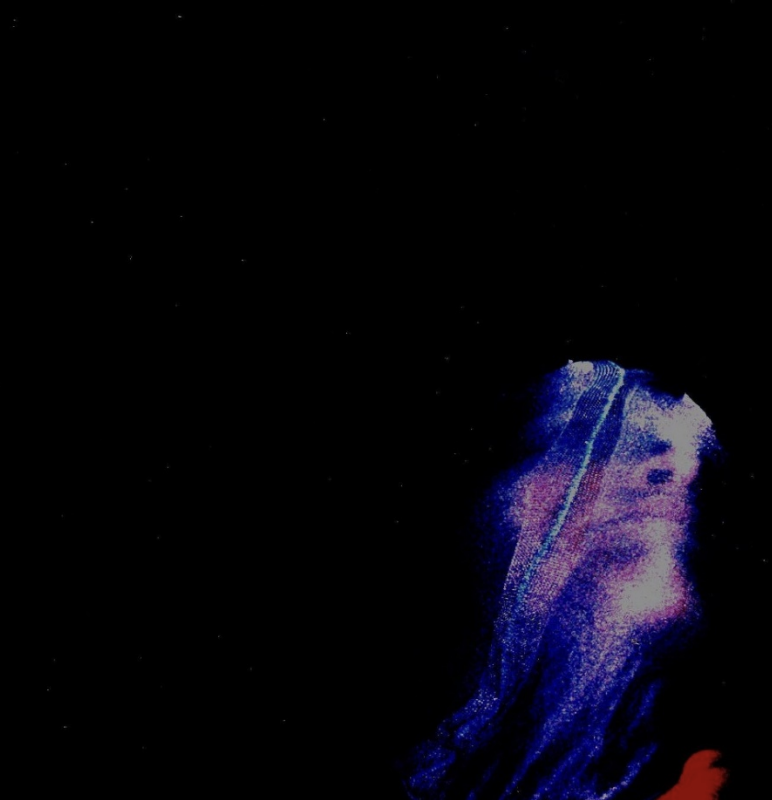
Eyesight and Insight
Susanna Ruebsaat
Victoria, British Columbia, Canada
Artist Statement
Darkness within darkness.
The gateway to all understanding. (1)
Not long after my vision loss, I went on a trip to an unfamiliar city. I wondered, if stepping this far outside my familiar territory would bring me equally as far inside the uncanny interiority of my blindness in a way that might offer some insight into how to navigate this treacherous terrain.
Where was I? Inside or outside of myself? Was this blackness surrounding me or in me? What was it leaving me out of? Or what was it leading me into? I was terrified of this dark interiority, this experience of endless Nothing around me. I needed to extend this dark interiority in a manner I had never done before, so that I might discover its seed, the deep intention psyche held for me. I wanted to twist into the inside, outside polarization itself. So I waited on images, feeling into the subtle flickers of this foreign sensibility, this “otherness” blindness offered.
Essay
Figure 72 Psyche’s Seeds
I had previously taken for granted my ability to stride into the landscape in front of me so blindly while still fully sighted. Now I was entering this gap between intention and extension, the very liminality of my own subjectivity. I needed to leap into this mythopoetic landscape in order to close this gap, ironically, by entering into it. Here I was the dancer, the liminal figure, my body, the alchemical Klein bottle taking up the call for the archetypal activism to craft a spiral lens that sees beyond seeing, crystallizing images into insight. Wanting to shape symbolic processes into embodied images I could see, I felt for my camera. The camera is a small symbolic version of the Klein bottle (symbolically fashioned after the Klein bottle, the vessel of transformation that vas in alchemy). The camera’s lens is a perfect metaphor for the spiral lens. The body and lens of the camera operate much like a mythopoetic inquiry—holding images inside its dark body and transforming them into pictures. I knew the camera would surely be the trusty friend it had been for so long while I was fully sighted, now acting as an extension of the budding new relationship of intention. What was Psyche's intention in this descent into survival mode?
My intention was to see, even if my eyes could no longer do this in a manner I was accustomed to.
I couldn't rely on those eyes anymore. They were damaged beyond repair and left me facing the unbearable image of no-image. Retinas hemorrhaging, I plunged into the abyss of blur and grey, with no distinct outlines to map out my path.
Figure 73 In the Abyss and Blur
The intention of the blindness, its ulterior motive, was to create new pathways “inside.”
Intuitively, I knew this would be done by extension, as the story of my trip to an unfamiliar city above illustrates. Through extending my blindness into a world I no longer knew, I was testing this intention, it’s seed, life flickering inside darkness. In the interiority of the Klein body—this black place of no image—much like the inside of a camera, the spiral lens was being crafted.
Figure 74 Wounded Retina as Black Sun
How did my mind miraculously bend all those things I could no longer see into shapes to play with, to become the space of creativity that I inserted myself into? The seed of blindness began sprouting images within the very gaps my eyes presented to me as Nothing. Without my knowing, these gaps were morphing into possibilities, no longer just holding the deadness I was so terrified of. Here Psyche’s ulterior motive of vision, moving from eyesight to insight—from the literal to the symbolic—was unfolding.
A mythopoetic eye was beginning to open.
So with my friend, the camera and my love of image I played. I flew into the gaps the intention of my blindness had created for me. I entered the uncanny. I could not fully understand what mysterious intention my body and intuition were speaking of through this blindness. But I wanted to know if it's wisdom, so far from my immediate experience of being blind. I had no idea what might reach into those traumatized places my retina now held like shocked babies.
Figure 75 Baby
I did not know how my mind bent light and shapes for this soul-play, but my body knew something. I had to stride into those gaps, into those uncanny spaces of nothing/anything, not knowing where or even if my leg would reach a spot for my foot to land, some solid ground. I had overwhelming fear that this leg extension would simply throw off my balance completely, finding no horizon line to orient me. No horizon.
Figure 76 No Horizon
I am still unsure of my footing. A friend once confided in me that she could not “see” my blindness until one day she noticed me pausing briefly upon entering or exiting.
In. Out. A “stop” my blindness offered.
A pause as each step entered into or out of a house, a room, from light to darkness, or dark to light, she observed an ever so slight hesitation: a pause for . . . an image, a feeling, a sense of where I am going, where I am; Mapping out new territory with footprints that vanished into an invisible horizon, a new notion of myself without horizons; assessing the intention of body, heart, mind, psyche, and my extension into/out of . . . the next step in life: “I am always situated in the present, on the way somewhere as having been somewhere.
Thus, experience is always in the process of becoming.
Just when I am aware of things as determinate and thematic, new possibilities emerge on the horizon and the past fades away as more ambiguous.” (2)
This stepping, toes edging surfaces of . . . “Your body will be somewhere,” my mother used to tell me. I too, could not “see” my blindness, though I knew all too well that my sighted life had faded to black. The leitmotif of my being was now something I would find in an entirely different context. Darkness. What world was I looking to that was looking back at me, that might hold the sense of a horizon? I think of my friend the camera. Was this unfamiliar world looking back at me so that I might…
Figure 77 Cocoon of Blindness
Who do I become in the face of the unbearable, the impossible, the numinous?
“When the soul wants to experience something, she throws out an image in front of her and then steps into it.” (3)
Figure 78 Sniffing and Listening
Was this what my liminal Klein body was doing? Throwing out an image in front of her-self and then stepping into it—in her desire and imperative to experience something? Eckhart’s notion of soul/Psyche performing such an act invites me to listen to Psyche’s desire (intent) and extend into an image I could then be (in).
I wanted to know the truth of the intention of my blindness, to feel it in my Klein body, so that I could extend my leg towards some stepping stone in place of the horizon I had lost. My phantom vision knew it was the precursor or seed of the vision-maker living in the mythopoetic, reaching back for me to fulfill the intention of my blindness in this imaginal maneuver. This archetypal action, this radical imagining, would re-turn my vision of my world through me entering it, mov moving into the gaps, and embodying Psyche’s deeper intention, step by precarious step.
“In the movement of my gaze from one thing to the other, I do not drop into the invisible.” (4)
Yet I did drop into the invisible—into those gaps in my vision that seemed like Nothing but absence.
Figure 79 What Blindness Feels Like
I'm beginning to enter those gaps subjectively, to fill them with myself in the manner Meister Eckhart suggests, by throwing and then stepping into an image of herself (the soul of blindness). As I enter the space in front of me that I cannot “see,” I drop into a part of myself that was previously invisible; it only becomes apparent to me the moment I step into it.
I become an embodied image of myself in deep time...
In this moment, I am not lost in absence because I cannot see myself. Rather, I am embodied in Psyche’s intension/extension, an embodied image that is Psyche’s intent. I am an embodiment of the imaginal world that I can now enter.
I have always been a part of this world. A deep re-membering is taking hold here. I step into this previously invisible image just in time for me to land.
I am in the image I experience as “me” in this moment. I am no longer lost.
From inside this threshold of Psyche’s image, the horizon is nothing other than myself/Psyche, imaging/embodying the future entering me in order to be transformed. And in turn, this imaging itself transmutes my image of myself as separate, invisible, absent.
Rather than experiencing nothing but emptiness in the gaps—the absence of my vision and the absence from myself—I can feel some other form of consciousness coming into being.
Einfuhlung.
This offers me a sense of an alternate selfing emerging. It feels as if a connection to the future, the seeds of which have already been present in my myth are waiting to sprout through the mythopoetic inquiry itself.
A new horizon appears to orient myself in the inner and outer landscapes of experience.
The mythopoetic horizon now looks back at me and so teaches me its knowing of the future already inside my being, morphing reflexively through the Klein Body into a spiral lens that sees past-present-future in a moment of deep time—“the immortal present” (5). The resonance between this mutually transformative knowing that the horizon holds, and the seeds of the future in my body in the present, creates a field of meaning that is revolutionary to me. It is nothing less than learning how to see again.
Figure 80 Morphing Through the Klein Body
1. Lao-tzu, Tao Te Ching, 3.
2. Robbins, “Maurice Merleau-Ponty.”
3. Eckhart, Complete Mystical Works, 31.
4. Ozeri, “Merleau-Ponty on Seeing.”
5. See Jung, Red Book.
6. To read more about Klein body in alchemy - Pauli’s Dream: Jung, Modern Physics, and Alchemy
Where is your home?
Check out Nostalgia and Longing for Home, a FREE mini-course by James Hollis, Ph.D., a renowned Jungian analyst.




